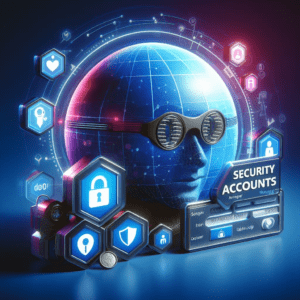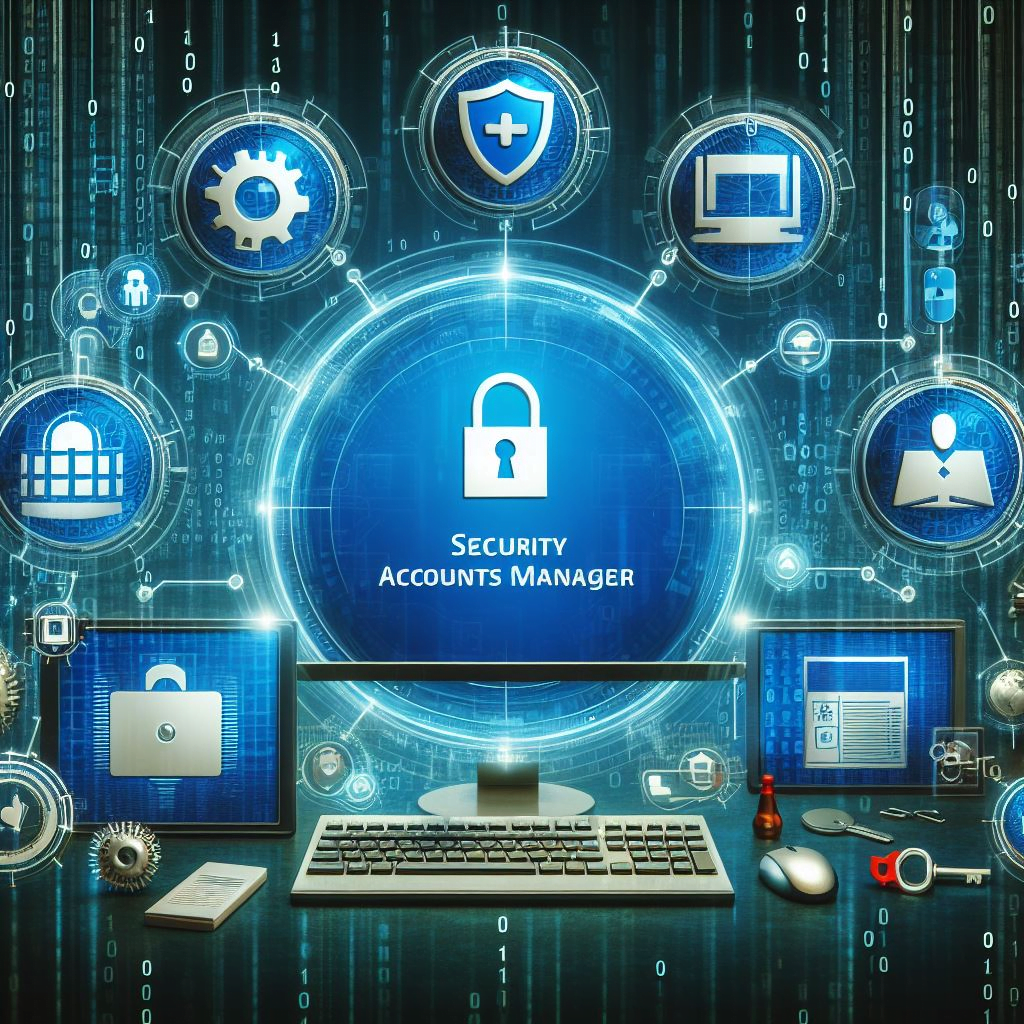Introduction
Welcome to our comprehensive guide on the Security Accounts Manager (SAM). This essential component of the Windows operating system is a cornerstone of system security, managing user credentials and access controls. In this article, we’ll explore what SAM is, its key functions, and why it’s vital for maintaining the integrity of your system.
What is the Security Accounts Manager (SAM)?
SAM is a database within the Windows operating system that stores user account information. It’s a critical part of the system’s security framework, ensuring that only authorized users can access the computer. SAM operates mostly behind the scenes but plays a pivotal role in user authentication and system protection.
To understand SAM better, consider it as the gatekeeper of the system. It keeps track of every user account and the associated permissions, ensuring that only those with the right credentials can access the system. This mechanism is fundamental for the secure operation of any Windows-based environment, whether it’s a personal computer or an enterprise network.
Key Functions of SAM
Authentication
SAM is integral to the authentication process. When you log into a Windows system, SAM verifies your identity by comparing your entered password against its stored credentials. This process is crucial for preventing unauthorized access and safeguarding user data.
For a deeper understanding of the authentication process in Windows systems, Microsoft provides comprehensive documentation on credentials processes in Windows authentication. This resource offers valuable insights into the intricate mechanisms involved in user authentication and how SAM plays a pivotal role in this process.
Password Management
SAM’s role extends to password management, where it securely stores and manages user passwords. By encrypting passwords and storing them in a hashed format, SAM enhances the security of your credentials, making it difficult for unauthorized entities to decipher them.
This encryption is vital because it prevents attackers from easily accessing passwords even if they manage to breach the system. SAM uses cryptographic techniques to convert passwords into hashes, which are irreversible, thus adding a layer of security. This ensures that even if an attacker obtains the SAM database, they cannot easily decrypt the passwords.
User Account Management
Beyond authentication, SAM is responsible for user account management. It handles tasks such as creating new user accounts, updating existing ones, and deleting those no longer needed. This ensures that access to the system is always up-to-date and reflects current user permissions.
For example, when an employee leaves a company, their account should be promptly removed from the system to prevent unauthorized access. SAM helps in managing these changes efficiently, ensuring that only active users have access to the system’s resources.
Importance of SAM in System Security
Preventing Unauthorized Access
SAM is instrumental in preventing unauthorized access by storing user credentials in a secure manner. When a user logs in, SAM verifies the provided credentials against its database to ensure they match, thus allowing access only to authenticated users. This process is vital for protecting sensitive data and resources from unauthorized users.
by storing user credentials in a secure manner. When a user logs in, SAM verifies the provided credentials against its database to ensure they match, thus allowing access only to authenticated users. This process is vital for protecting sensitive data and resources from unauthorized users.
In today’s rapidly evolving threat landscape, staying abreast of emerging cybersecurity threats is paramount. Advancements in AI-driven defense systems are shaping the future of cybersecurity, enabling proactive threat detection and mitigation.
To learn more about the latest trends in cybersecurity and the role of AI-driven defense, check out this insightful article.
Ensuring Data Integrity
Data integrity refers to the accuracy and consistency of data over its lifecycle. SAM contributes to this by managing access to user accounts and ensuring that only authorized changes are made. By controlling who has access to modify data, SAM helps maintain the integrity of the data within the system.
For instance, SAM ensures that only authorized users can make changes to critical system settings or sensitive data files. This control helps prevent accidental or malicious alterations that could compromise data integrity.
Facilitating Compliance
SAM aids organizations in compliance with security regulations and standards by enforcing access controls and authentication mechanisms. This ensures that organizations meet the necessary security requirements and protect user data as per industry standards.
Compliance with standards like GDPR, HIPAA, and PCI-DSS is crucial for many organizations, and SAM plays a key role in ensuring that user authentication and access controls meet these regulatory requirements.
Common Issues with SAM and How to Address Them
Corrupted SAM Database
A corrupted SAM database can occur due to hardware failures, software bugs, or malicious attacks. To resolve such issues, it’s important to have regular backups and use reliable security software for early detection and recovery from corruption.
Corruption in the SAM database can prevent users from logging in or accessing critical resources, leading to operational disruptions. Regular backups ensure that you can restore the SAM database to a known good state in case of corruption.
To address a corrupted SAM database:
- Regular Backups: Maintain regular backups of your SAM database to ensure you can restore it if corruption occurs.
- Use Reliable Security Software: Employ security software that can detect and address potential threats that could corrupt the SAM database.
- System Monitoring: Continuously monitor your system for signs of corruption or unusual activity that could indicate an issue with the SAM database.
For insights into the cost, benefit, and risk analysis of database backups, check out this informative article on The Cost, Benefit, and Risk of Database Backups. Understanding the importance of backups and the potential risks involved can help organizations develop robust backup strategies to safeguard their critical data and mitigate the impact of database corruption.
SAM File Vulnerabilities
SAM file vulnerabilities can expose sensitive data if not properly secured. Protection against such vulnerabilities includes applying security updates, restricting access to SAM files, and using encryption to safeguard the data stored within the SAM database.
For example, the SAM database file is located at %SystemRoot%/system32/config/SAM, and access to this file should be restricted to prevent unauthorized users from attempting to extract data from it.
To protect SAM files:
- Apply Security Updates: Ensure your system is updated with the latest security patches to protect against known vulnerabilities.
- Restrict Access: Limit access to the SAM file to only those users who absolutely need it, typically system administrators.
- Use Encryption: Encrypt the SAM database to add an additional layer of protection, ensuring that even if the file is accessed, the data remains secure.
Best Practices for Managing SAM
Regular Backups
Regular backups of the Security Account Manager (SAM) database are critical for maintaining system security and data integrity. Let’s delve into why regular backups matter and how they contribute to robust security:
- Importance of Regular Backups
- Data Recovery: Without backups, recovering lost or corrupted data becomes impossible. Regular backups provide a safety net, allowing organizations to restore critical information in case of accidental deletion, hardware failures, or cyberattacks.
- Data Security: Backups protect against ransomware attacks. By separating pre-attack and post-attack data, organizations can recover to a clean state and circumvent the impact of ransomware.
- Business Continuity: Downtime due to data loss can disrupt operations. Regular backups ensure that businesses can quickly resume normal activities after an incident.
- Best Practices for Regular Backups
- Backup Frequency: Schedule backups frequently based on business needs. Consider both recovery time objectives (RTOs) and recovery point objectives (RPOs). RTO defines how quickly data must be restored, while RPO specifies the desired recovery point in time.
- Backup Types:
- Full Backup: Capture the entire database. Comprehensive but resource-intensive.
- Incremental Backup: Store changes since the last backup. Reduces storage requirements but may take longer to restore.
- Differential Backup: Capture changes since the last full backup. Balances efficiency and restoration speed.
- Automate Backups: Use reliable backup software to automate the process. Avoid overloading systems while ensuring timely backups.
Strong Password Policies
Implementing strong password policies enhances security. Consider the following guidelines:
- Complexity: Encourage users to create passwords with a mix of uppercase, lowercase, numbers, and special characters.
- Length: Longer passwords are harder to crack. Aim for at least 12 characters.
- Avoid Common Words: Discourage using easily guessable information like birthdays or common words.
- Regular Updates: Enforce periodic password changes to prevent prolonged exposure to compromised credentials.
By implementing these password policies, organizations can significantly reduce the risk of password-based attacks, such as brute force attacks and password spraying.
Access Controls
Access control measures protect the SAM database from unauthorized access:
- File System Locks: SAM files are inaccessible to standard user accounts. Only system-level processes can interact with them directly.
- Audit SAM Database Access: Monitor and detect unauthorized attempts to access the SAM database.
- Restrict Administrative Privileges: Limit users with administrative rights to mitigate privilege escalation threats and control SAM database access.
By enforcing strict access controls, organizations can minimize the risk of unauthorized access to critical system files and data.
Conclusion
Proper management of the Security Accounts Manager is vital for maintaining system security. By understanding SAM’s functions and adhering to best practices, organizations can safeguard their systems against unauthorized access and ensure compliance with security standards. The continuous evolution of security threats makes it imperative to stay vigilant and proactive in managing SAM effectively.
Investing time and resources in securing and managing the SAM database not only protects sensitive information but also ensures the smooth and secure operation of Windows systems. As cyber threats continue to evolve, maintaining robust security measures around SAM will help organizations stay ahead of potential risks and safeguard their digital assets.


